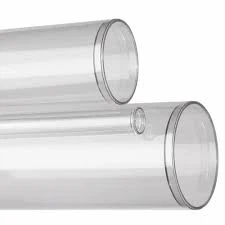Nov . 27, 2024 17:26 Back to list
Durable HDPE Rainwater Pipe Solutions for Efficient Drainage Systems
The Advantages of HDPE Rain Pipes A Sustainable Solution for Stormwater Management
In recent years, the focus on sustainable building materials and practices has intensified, particularly with the growing concerns regarding climate change and environmental degradation. One such innovative solution that has gained attention is the use of High-Density Polyethylene (HDPE) for rainwater piping systems. HDPE rain pipes are becoming a popular choice for both residential and commercial applications, thanks to their numerous advantages over traditional materials.
Understanding HDPE
High-Density Polyethylene, commonly referred to as HDPE, is a thermoplastic polymer known for its strength, durability, and resistance to various environmental factors. It is produced through the polymerization of ethylene and is characterized by its high density, which grants it superior tensile strength and resistance to impact. This makes HDPE an ideal material for applications such as rainwater management, where durability and longevity are key factors.
Environmental Benefits
One of the most compelling reasons to consider HDPE rain pipes is their positive impact on the environment. Unlike traditional materials such as concrete or PVC, HDPE is recyclable, which significantly reduces its carbon footprint. Recycled HDPE can be reprocessed to create new pipes or various products, minimizing waste and promoting a circular economy. Moreover, HDPE pipes require less energy to manufacture compared to their concrete counterparts, aligning with the growing demand for sustainable building practices.
Additionally, using HDPE pipes contributes to efficient stormwater management. These pipes help prevent surface runoff and manage stormwater effectively, reducing the risk of flooding and erosion. By directing rainwater away from impervious surfaces and into infiltration basins, HDPE rain pipes facilitate groundwater recharge, an essential process for maintaining healthy ecosystems.
Durability and Longevity
HDPE rain pipes boast impressive durability and longevity, often exceeding 50 years in service life. Their inherent resistance to corrosion, rust, and chemical exposure ensures that they maintain structural integrity over time. This is particularly important in stormwater drainage systems, where pipes are often exposed to various environmental conditions, including extreme temperatures and moisture. HDPE's flexibility also allows it to withstand ground movement and settling, reducing the likelihood of cracks and leaks that can compromise the efficiency of drainage systems.
hdpe rain pipe

Ease of Installation
Another significant advantage of HDPE rain pipes is their ease of installation. Unlike heavier materials, HDPE pipes are lightweight, making them easier to transport and handle. This can reduce labor costs and installation time, resulting in a more efficient project timeline. Furthermore, HDPE pipes can be joined using heat fusion or mechanical connections, creating seamless joints that enhance flow efficiency and reduce the risk of leaks.
Cost-Effectiveness
While the initial investment in HDPE rain pipes may be comparable to that of traditional materials, the long-term cost savings are substantial. Given their durability and low maintenance requirements, HDPE pipes typically offer lower lifetime costs. The reduction in repair and replacement expenses due to the pipes' resilience contributes to overall project savings. Additionally, the efficient management of stormwater can help mitigate the costs associated with flooding and property damage.
Versatility in Design
HDPE rain pipes are highly versatile and can be used in a variety of applications ranging from residential rainwater harvesting systems to municipal stormwater management projects. Their adaptability allows for innovative design solutions tailored to specific site conditions. From residential gardens to urban plazas, HDPE’s lightweight and flexible properties enable engineers and architects to incorporate effective drainage solutions even in constrained spaces.
Conclusion
The increasing adoption of HDPE rain pipes signals a significant shift towards more sustainable and efficient stormwater management systems. With their myriad benefits—including environmental sustainability, durability, ease of installation, cost-effectiveness, and design versatility—HDPE pipes represent a robust solution for modern rainwater management challenges. As communities continue to grapple with the impacts of climate change and urbanization, the utilization of HDPE technology will undoubtedly play a crucial role in building a more sustainable future. Investing in HDPE rain pipes is not just a practical decision; it is a step towards responsible environmental stewardship and a resilient built environment.
-
High-Quality PPR Pipes and Fittings Durable ERA PPR & PVC PPR Solutions
NewsJul.08,2025
-
Black HDPE Cutting Board - Durable, Non-Porous & Food Safe HDPE Plastic Cutting Board
NewsJul.08,2025
-
High-Quality CPVC Panel Durable HDPE & PVC Panels Supplier
NewsJul.08,2025
-
Double PE Welding Rod Supplier - High Strength, Durable & Versatile Welding Solutions
NewsJul.07,2025
-
High-Quality PVC-O Pipe Supplier Durable 75mm PVC Pipe & Connections Leading PVC Pipe Company
NewsJul.07,2025
-
HDPE Drainage Pipe Supplier – Durable & Corrosion-Resistant Solutions
NewsJul.06,2025

